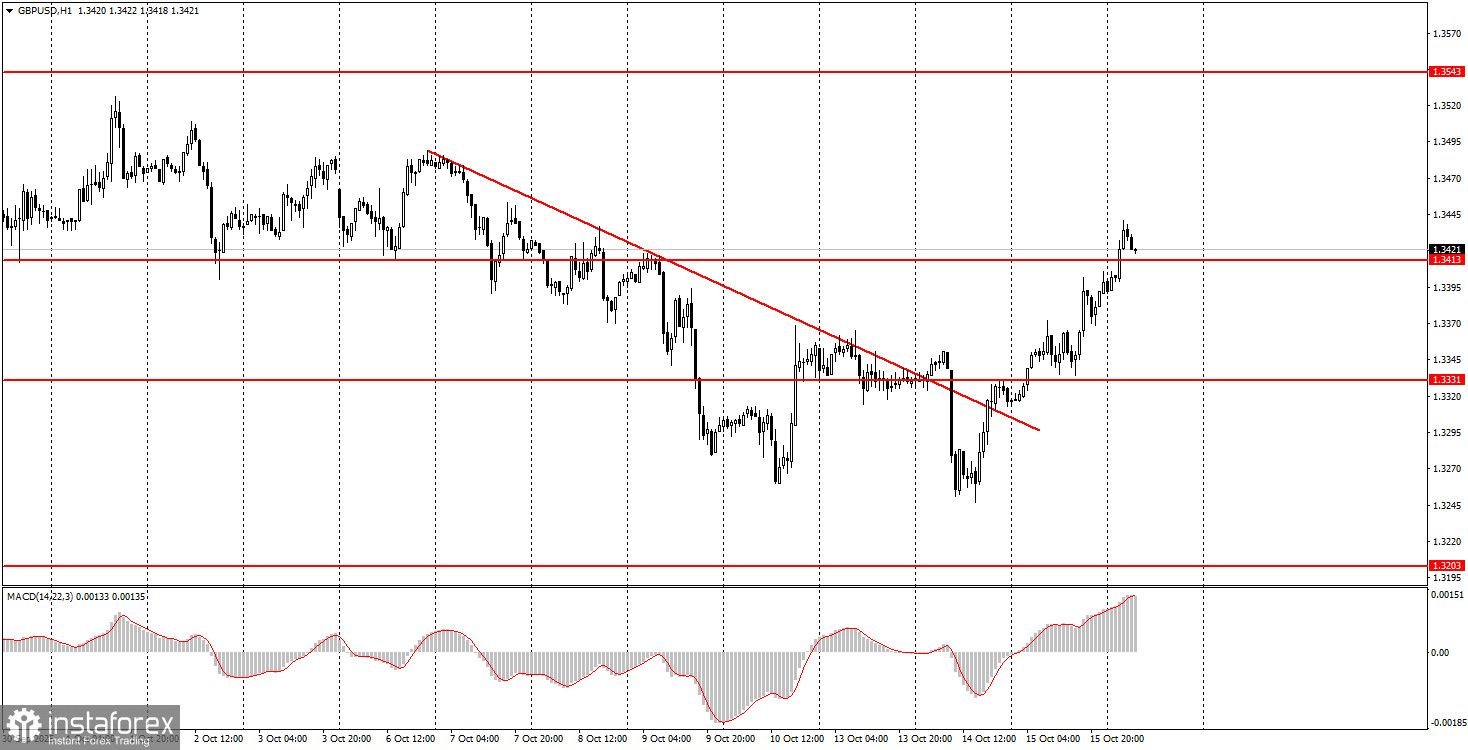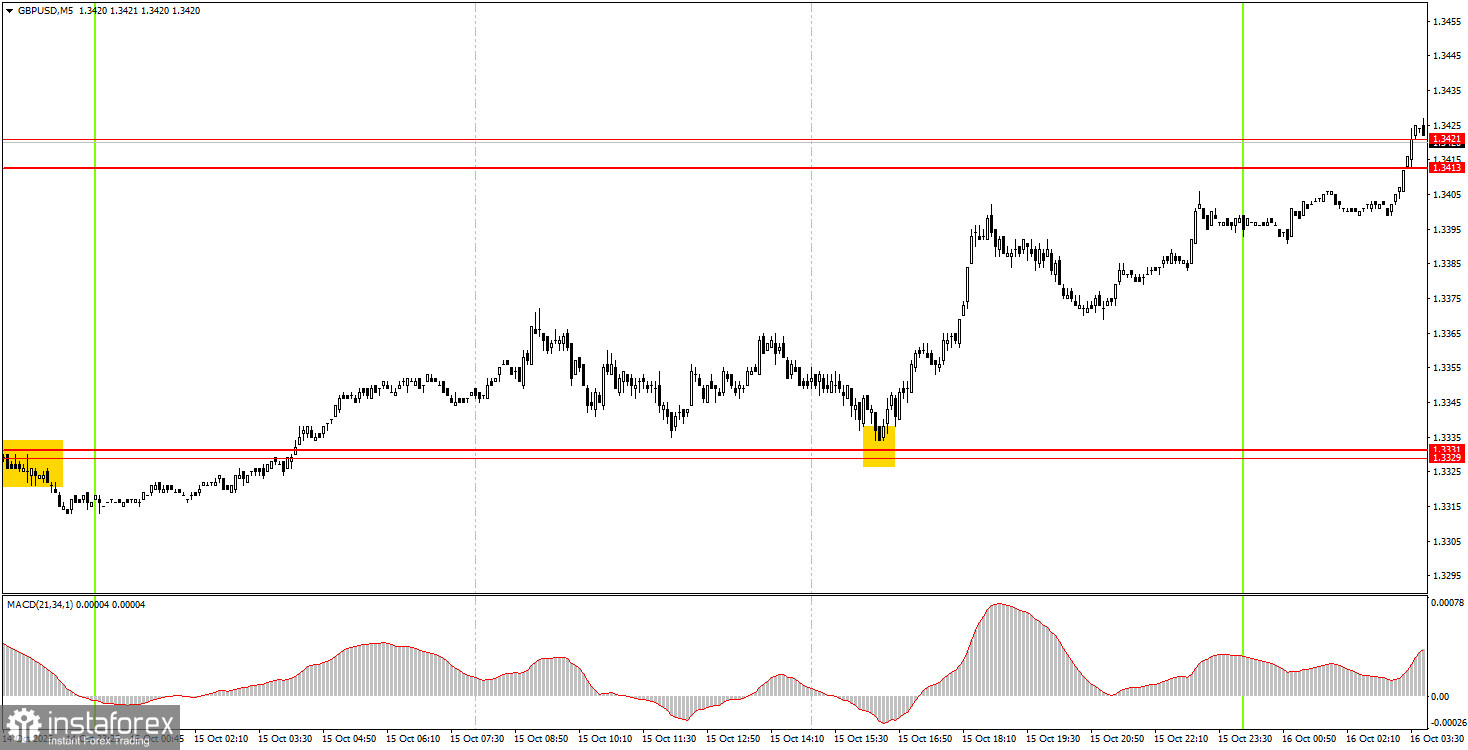Trade Review for Wednesday:
1-Hour GBP/USD Chart

The GBP/USD pair rose confidently throughout Wednesday, which is a very positive signal. In recent weeks, we have repeatedly pointed to the illogical nature of the pair's decline, so this latest rise appears to be a "debt repaid" to the British currency. While there have indeed been negative headlines for the pound in recent weeks, they pale in comparison to the fundamental and macroeconomic backdrop weighing on the U.S. dollar. Yesterday, there were no significant events or economic releases in either the UK or the U.S. that could justify a rise in GBP/USD. This move is even more noteworthy, as it strongly suggests that the long-term bullish trend of 2025 is resuming. On the daily timeframe, the price has been consolidating in a range for months. Every flat market eventually ends, and there are still no solid reasons to expect sustained dollar strength in the medium term.
5-Minute GBP/USD Chart

On the 5-minute chart, a single valid trade signal was formed on Wednesday, albeit with a minor deviation. During the U.S. trading session, the price bounced off the 1.3329–1.3331 area and then climbed toward 1.3413–1.3421. This provided beginner traders with one potential long trade, which would have resulted in profit, even if closed manually by the end of the session.
How to Trade on Thursday:
On the hourly chart, the GBP/USD pair has finally begun forming a new upward trend, which could mark the beginning of a new phase in the global bullish movement. As previously mentioned, there are no convincing reasons for a prolonged U.S. dollar rally; thus, the medium-term outlook remains bullish for the pound. Donald Trump's resurgence in tariff-related actions over recent weeks will likely discourage investors from holding the dollar.
On Thursday, GBP/USD may attempt to extend its upward movement, as market sentiment has turned bullish. A confirmed breakout above the 1.3413–1.3421 area would allow traders to open long positions targeting 1.3466–1.3475. Conversely, if the price fails to hold above this zone and falls back beneath it, a corrective pullback could begin within the context of the new trend.
On the 5-minute TF, you can now trade at levels 1.3102-1.3107, 1.3203-1.3211, 1.3259, 1.3329-1.3331, 1.3413-1.3421, 1.3466-1.3475, 1.3529-1.3543, 1.3574-1.3590, 1.3643-1.3652, 1.3682, 1.3763. Note that UK GDP and industrial production data will be published on Thursday. These are relatively low-impact releases in the current context, but given the lack of other major drivers, the market may still react moderately to these figures.
Core Rules of the Trading System:
- Signal strength is judged by the time required for signal formation (bounce or breakout). The quicker the formation, the stronger the signal.
- If two or more false trades were opened at a level, any subsequent signals from that level should be ignored.
- In flat markets, currency pairs may produce numerous false signals or none at all. It's best to stop trading at the first signs of a flat.
- Trades should be opened during the European session through the midpoint of the U.S. session. All trades should be manually closed afterward.
- On the hourly chart, MACD signals should only be used when good volatility and a clear trend are confirmed with a trendline or channel.
- If two levels are too close to each other (within 5 to 20 pips), they should be considered a support/resistance zone.
- After 20 pips of movement in the correct direction, set the Stop Loss at breakeven.
Chart Annotations:
- Support/resistance levels: key targets for opening buy/sell trades. Take Profit levels can also be set near them.
- Red lines: trendlines or channels indicating the current trend and preferred trade direction.
- MACD (14,22,3): histogram and signal line, used as an auxiliary signal generator.
Important Note:
Key speeches and economic reports (always available in the news calendar) can significantly affect currency pair movements. During such events, trade with extreme caution or exit the market to avoid sudden reversals against the prior trend.
Reminder for Beginners:
No trade is guaranteed to be profitable. The key to long-term success in forex trading is to develop a clear strategy and apply sound money management principles.
 English
English 
 Русский
Русский Bahasa Indonesia
Bahasa Indonesia Bahasa Malay
Bahasa Malay ไทย
ไทย Español
Español Deutsch
Deutsch Български
Български Français
Français Tiếng Việt
Tiếng Việt 中文
中文 বাংলা
বাংলা हिन्दी
हिन्दी Čeština
Čeština Українська
Українська Română
Română

